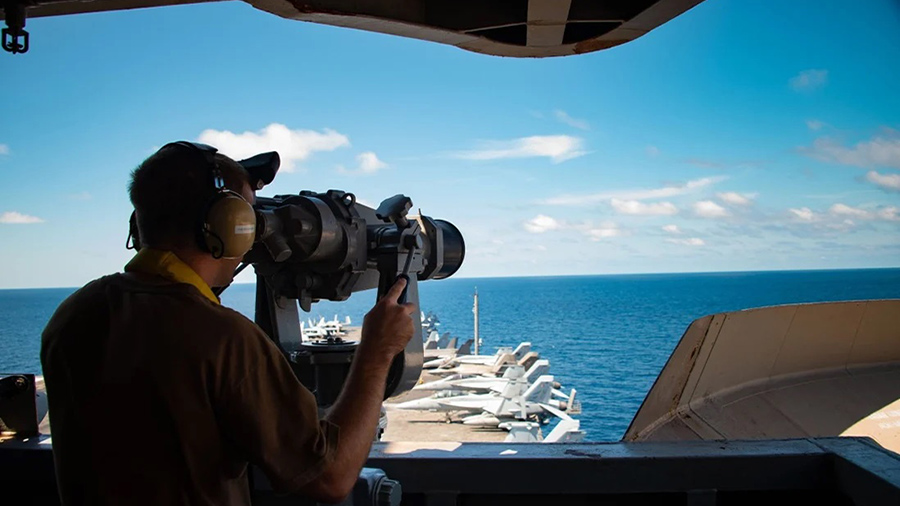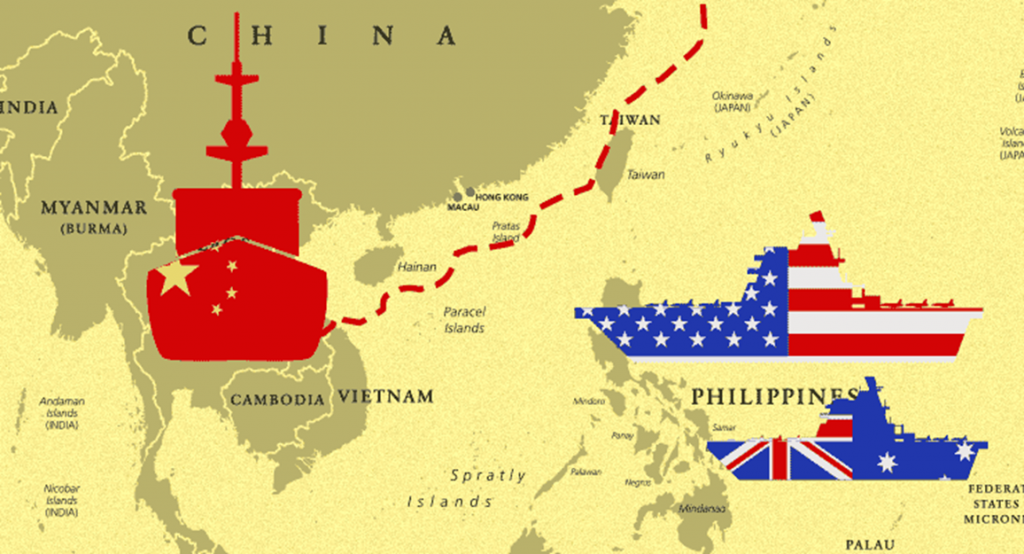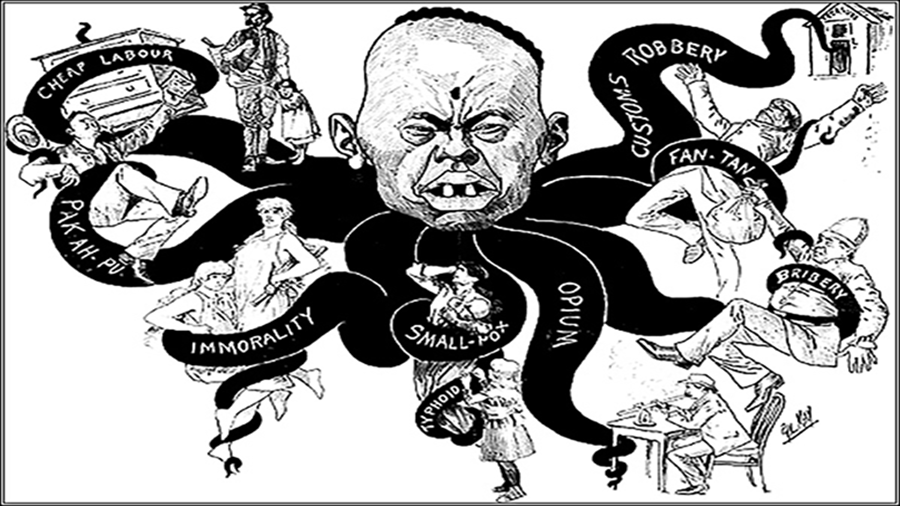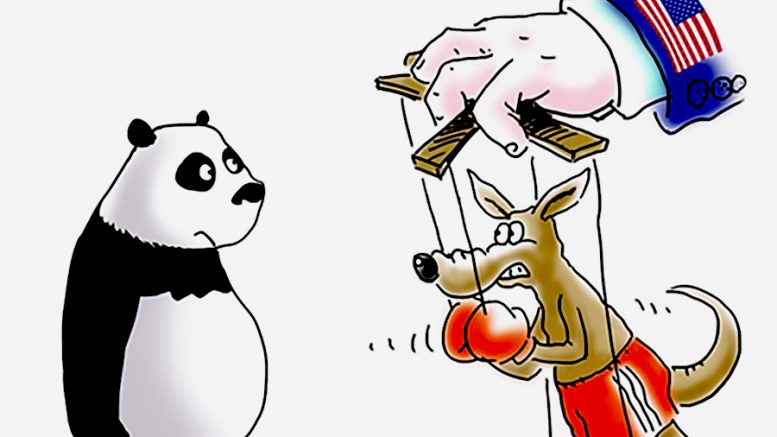Contributed by Joe Montero
Australia’s involvement in the United States led actions in the South China Sea are not what we are being told, and it brings about an immense risk of a military escalation that will bring a catastrophe. Taking war ships and planes to China’s doorstep provokes a response.
The big media narrative echoes the line of an aggressive China bullying and threatening the world. Don’t be misled. This is pre-war propaganda, designed to manipulate public opinion – if it should come to war.
The question is who is on whose borders? Even if you put aside the moral bankruptcy of this position there remains a matter of law. Australia’s defence Minister Richard Marles has said that the presence in the South China Sea accords with international law. This is to keep the seas lanes open. But there is no evidence that China is blocking them. So, this justification doesn’t hold water.

Photo from Twitter: USS Carl Vinson of the US Seventh Fleet spying on China in the South China Sea
There is the matter of exclusive economic zones (EEZ). Nations regard waters up to 340 kilometres as part of their territory. The 1982 United Nations Convention on the Law of the Sea ratified this and gave nations the right to regulate economic activities within their own EEZ.
Australia ratified this Convention. The problem is that the United States did not. This is not to say that the United States is opposed to the concept. It imposes its own EEZ. But it does not recognize the EEZs of other nations. This difference that gives Washington the dubious pretext to argue the right to intervene in China’s EEZ. And this, it is argued, gives the right to conduct military exercises and spying activities.
When an expert form the Naval War College testified before Congress in 2009, said that if the positions of China, India, the Philippines, Indonesia, and Vietnam in respect to their EEZ’s, the United States would be forced to conduct military operations outside of them. He added that this would hamper sensors and missiles, and make amphibious assaults difficult. When this comes from such a well placed source, the words should be take seriously. It underlines Washington’s policy.
Here is a kind of admission that Washingtons’ strategy is to operate within China’s EEZ. To underline how big a deal this is, imagine the reaction if another nation sought to do the same within the United States’ EEZ. It would immediately generate a military response.
But denying other nations have the same right is necessary to fulfill the declared objective of United States domination over all oceans.
This brings in Taiwan, which sits on the border of China’s EEZ, if Taiwan has the status of an independent nation. It hasn’t got this. Even the United States recognized Taiwan as part of China. This means that China’s EEZ really includes Taiwan. Put this aside, and it remains there have been incursions between Taiwan and mainland China. This well within China’s EEZ, as can be seen in the map below.

A complication is that the Taiwanese government insists that its own territory extends in a circle beyond the island to incorporate part of the mainland. When China is accused of penetrating Taiwan’s air space, it’s about entering this zone. Taiwan is being used as an incursion point towards mainland China. The United States retains the contradictory policy of keeping recognition of Taiwan as part of China on the books, while encouraging its breaking away for this reason.
Australia’s involvement in this is due to government support for Washington’s goal to control the planet’s oceans and restrict China’s growth. Australia’s Defence Force is under effective control of the Pentagon. Intervention into the South China Sea is about control over the world’s biggest and therefore most important shipping lane. And this is an immense threat to China, which could potentially be denied access.
Today’s vilification of China and all that is Chines is not new. It is rooted in Australian history and racism for political objectives. Below is a cartoon widely circlated in 1881.

Some things haven’t changed much
What about the interception of two Australian aircraft in the skies? Both have been hypocritically called hostile and unprovoked acts. The truth is that both involved military aircraft equipped with spying technology and flying within China’s EEZ. Interception is standard procedure when one country intervenes in the airspace of another.
It seems that after the fall of Scott Morrison, the same policy continues. This is dangerous. Not so much because Australia poses a grave threat to China. We don’t. Australia lacks the might to do this. But Australia plays a role in Washington’s propaganda offensive, and more importantly, is dotted with United States communication stations critical to Washington’s offensive and emerging as a rear base for U.S. marines. A war with China will drag in Australia.
Whose interests is this in? No one. That’s who. All would be pulled down. There will be no victors. This a good reason why the cause for peace in our time is so important. A powerful peace movement must emerge to secure this. To succeed, peace must be tied to the principal of mutual respect, equality between nations, the generation of global cooperation, and an end to big power domination.


Be the first to comment on "The truth about Australia’s participation in incursions into China’s territory"